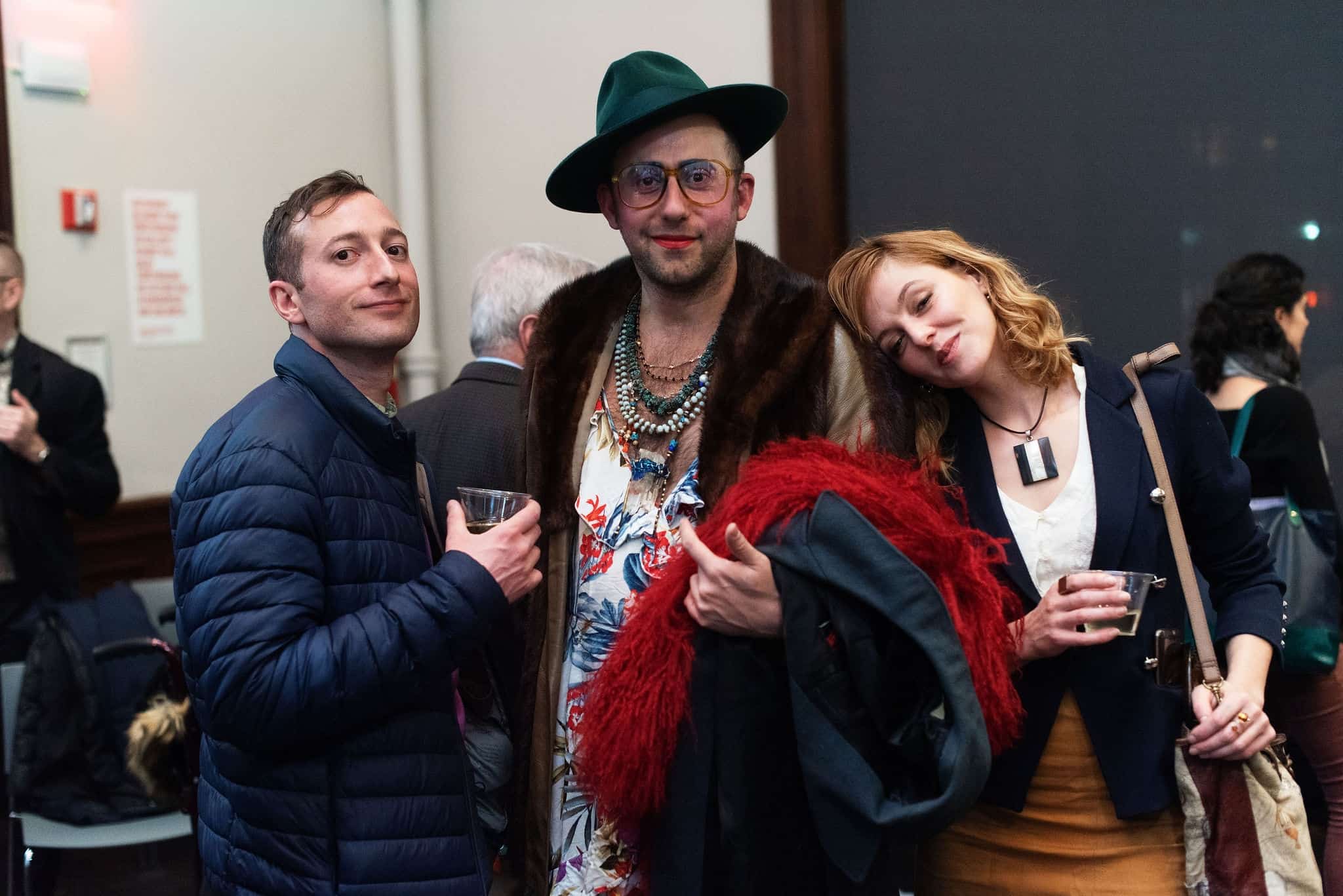It was a night of firsts at the Brooklyn Historical Society. On March 5, nearly 200 city residents gathered in the Great Hall to celebrate the launch of “When Brooklyn was Queer,” a new book by historian and curator Hugh Ryan that traces the untold history of the borough’s LGBTQ+ community – from the publication of Walt Whitman’s “Leaves of Grass,” in 1855, through the shuttering of the Brooklyn Navy Yard, in 1966.
But the book wasn’t the only cause for celebration. Visitors also came to toast a new exhibit at the historical society, which Ryan co-curated with the artist Avram Finkelstein. On the “(Queer) Waterfront: The Factories, Freaks, Sailors and Sex Workers of Brooklyn” is the first exhibition of its kind to focus explicitly on the borough’s queer history.
The exhibition documents how LGBTQ+ individuals in Brooklyn clustered around the waterfront. The building of the Erie Canal in 1820 turned New York City into the most important port in the world, and as a result, Brooklyn boomed. The industrial work and affordable housing on the Brooklyn waterfront provided queer people with the opportunity to live in community for nearly 150 years. “Queer desires have always existed,” Ryan said, “but in order to find them in the historical record, you need density. You need that kind of life building that enables you to end up in documents like newspaper reports and arrest records.”
The evening kicked off with a conversation between Ryan and the journalist J. Bryan Lowder, which ranged from the book and exhibit to the very nature of queer history itself. “As someone pointed out to me today on Twitter,” Ryan said to the audience, “this actually is a queer historical moment, and so all of us are contributing to the very thing that we’re talking about at the same time.”
Many members of the crowd were active participants of Brooklyn’s queer history in their own right. The room bustled with queer filmmakers, writers, Radical Faeries, activists and archivists – friends and collaborators from various chapters of Ryan’s life that had come to witness the culmination of his six-year-long project.
Michael Yarbrough, a professor at John Jay College of Criminal Justice, was one such collaborator. He met Ryan while organizing a conference for CLAGS: The Center for LGBTQ Studies. Yarbrough came to show support for Ryan because, as he explained, it’s part and parcel of the artistic culture of the borough. “That’s also the Brooklyn thing, right?” he said. “You go to each other’s celebrations for each other’s creations.”
Yarbrough brought a friend along, Jamie Cruz Velasquez, who had chosen to come to the opening despite the fact that it was also his birthday. “I love queer history,” Cruz Velasquez said. “And at my age, I’m becoming queer history, so what better way to celebrate.”
After Ryan and Lowder’s talk, the crowd filtered out of the hall to tour the exhibition. The line to the Gina Ingoglia Weiner Gallery trailed up three flights of stairs.
The exhibit is separated into five segments: artist, entertainer, sex worker, sailor, and factory worker. These were the forms of employment that were most commonly available to members of the LGBTQ+ community. As Ryan explained, queer people often gravitated to work that was eccentric, illegal, or itinerant, because it allowed them a certain amount of freedom of expression – and little oversight. There was also a lot of overlap. “Often times the sailors were sex workers,” Ryan said. “Sometimes the artists were also entertainers, who were seeing sex workers. It starts to knit together.”
The art, artifacts, and ephemera of the exhibit emphasize that interconnectedness. For instance, a 1942 portrait of the poet Naomi Replansky hangs in the “factory workers” section. According to the wall text, Replansky was actually on the factory floor when Scribner called to offer to publish her first book, Ring Song, in 1952. There’s also a black-and-white photograph from the 1920s of the poet Hart Crane’s lover, Emil Opffer, who worked as a merchant marine.
Hart Crane is one of the more recognizable names in the exhibition. In the case of the painter Edward Casey, only a few scant details about his life are known: He moved to Brooklyn after WWI, he was married to a woman, he was a high school teacher, and he was Catholic. But his work tells a different story. Casey painted erotic tableaus of naked men – interracial groups of dock workers and sailors – swimming and lounging on the banks of the East River. Two of his paintings hang in the show.
The most beguiling artifact in the exhibit is also the rarest: a never-before-seen scrapbook by Anne Moses, the first woman hired at the Todd Shipyards in Red Hook during WWII. “She was a prodigious scrap-booker,” Ryan said, and she “kept photos of herself and a group of lesbian women going back at least to the 1920’s.”
In a lucky turn of events, the one-of-a-kind scrapbook wound up in Ryan’s possession, by way of Moses’ nephew, who held onto it for decades after his aunt’s death. For Ryan, it was a gold mine. “After searching and searching for visual records of the lesbians who worked in the factories in Brooklyn – there’s nothing else like this out there that I’ve ever seen,” Ryan said. “It’s incredible.”
On the (Queer) Waterfront is up until Aug 4.









